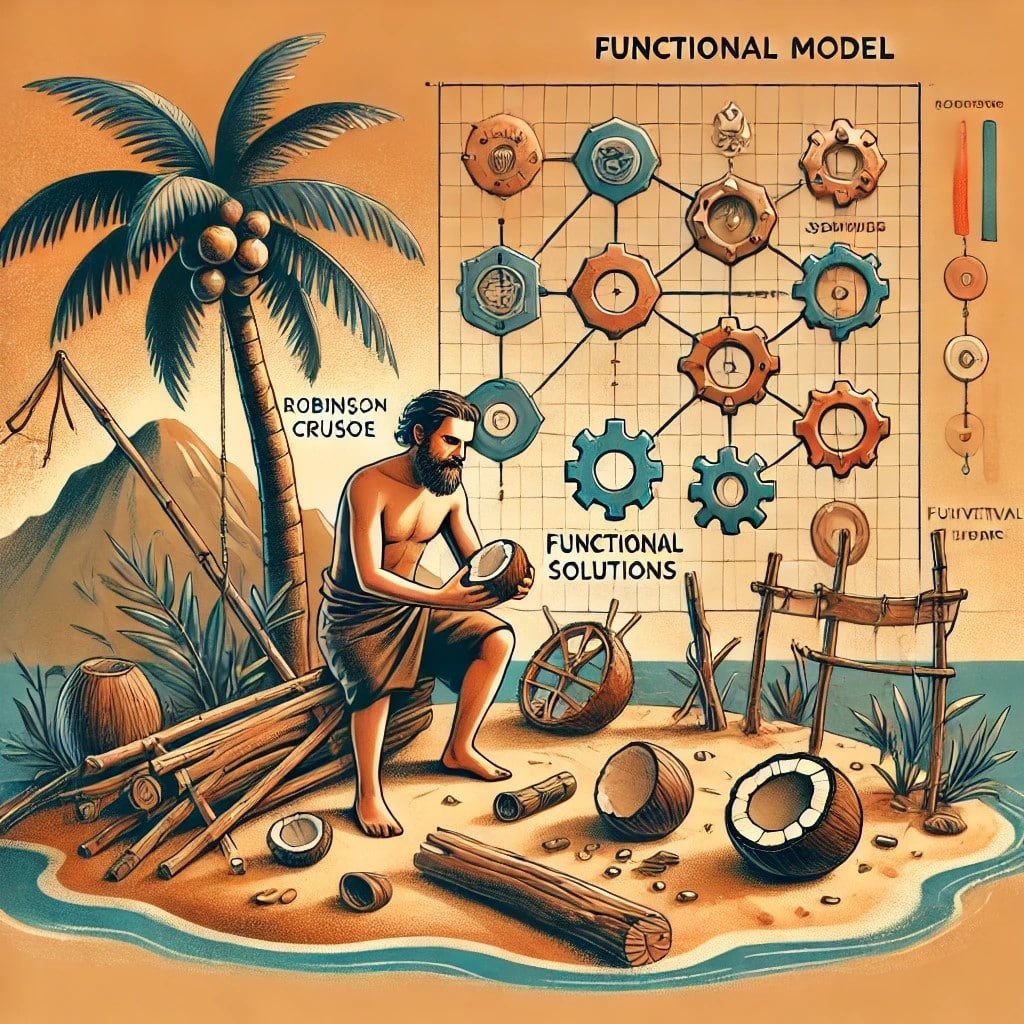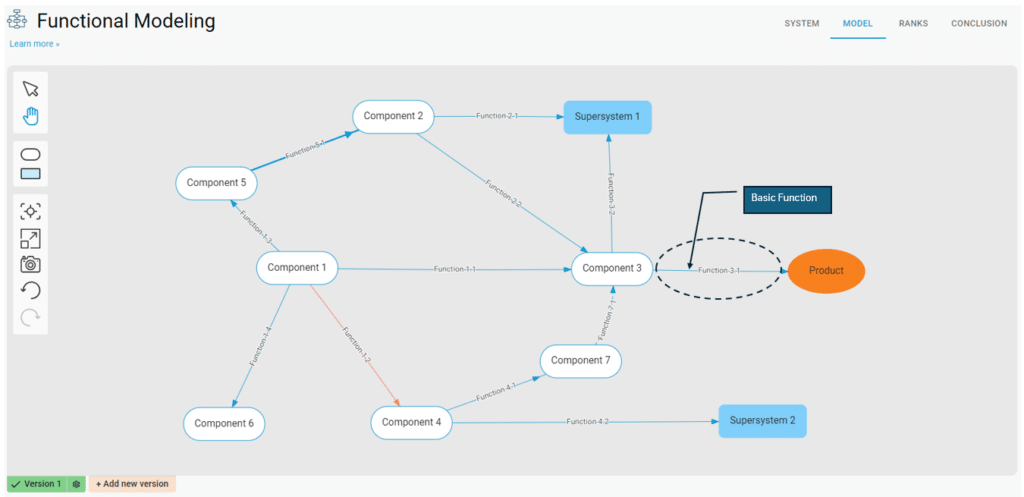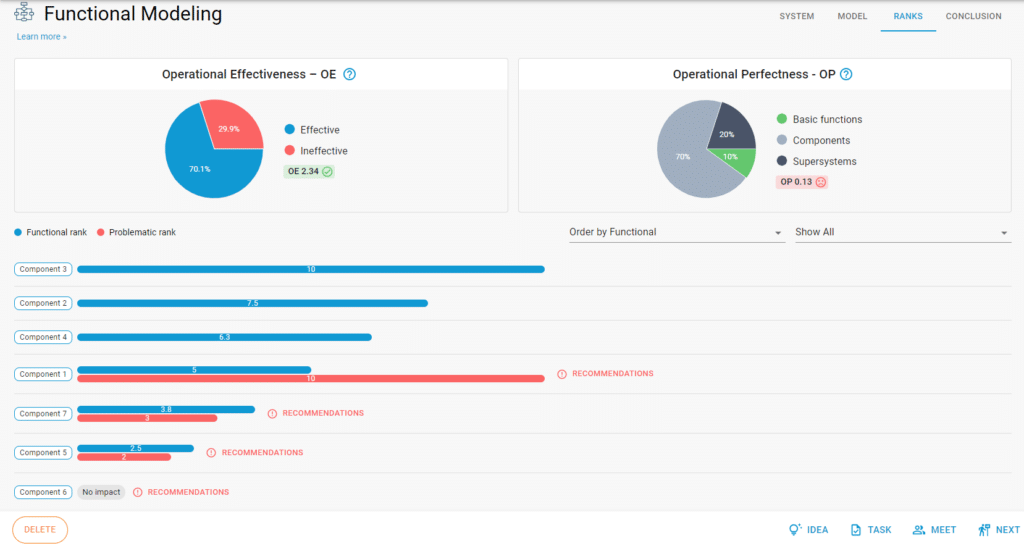In today’s rapidly changing world, innovation is not just a luxury or a path to growth; it’s a necessity for survival. To illustrate this, let’s step back in time to the story of Robinson Crusoe, the shipwrecked man who found himself stranded on a deserted island. Crusoe had to innovate constantly to survive, and his story highlights the essence of innovation in action.
Similarly, modern organizations face a daily survival challenge requiring structured innovation. The article encourages organizations to go beyond traditional brainstorming and instead adopt systematic, meaningful innovation to achieve sustainable improvements and thrive in competitive environments.

The PRIZ Guru’s System Functional Model offers a practical tool for managing innovation. It allows users to create a functional map of their system, identify underperforming or problematic components, and streamline operations by eliminating or reassigning functions. This approach focuses on simplification and achieving system “ideality”—a state where the system maintains only essential functions with minimal complexity.
Imagine yourself on a deserted island with no shelter, no food, and no tools—only your wits and what nature provides. This was Robinson Crusoe’s reality. Each challenge he faced forced him to innovate, often with very limited resources.
Here are just a few examples of his survival-driven innovations:
These examples showcase how important innovation is in challenging situations. Crusoe’s story reminds us that when resources are limited and challenges are daunting, the ability to innovate becomes a key to survival.
Let me ask you. Do you think we are in a very different position? Not really. We are actually in the same situation as Robison Crusoe, who was on the island. We also need to innovate every day in order to survive.
While the need for innovation is clear, a challenge remains: how to innovate effectively. In the business world, much like Crusoe’s situation, everyone talks about innovation and its importance, but when it comes to execution, many struggle. How do we move beyond the idea of innovation to actually implementing it in a meaningful and sustainable way?
True innovation doesn’t come from random brainstorming sessions or quick fixes. It requires a structured approach that can systematically identify which components in a system should be optimized, eliminated, or redesigned. Without this structure, most attempts at innovation result in mere changes, not true advancements.
At PRIZ Guru, we’ve developed a powerful tool to manage the innovation process: the System Functional Model. This tool provides a structured approach to help innovators at any level analyze and enhance the systems they work with.
Here’s how it works:
When we think about ideal innovation, it’s not about adding complexity; it’s about reducing it. The goal is to create a system that fulfills all necessary functions with minimal components. Imagine an ideal system where all components are invisible, yet the system still performs its intended purpose perfectly. The System Functional Model tool leads you toward this goal by highlighting which functions can be optimized, delegated, or even removed to reach a streamlined state of operation.
This path to ideality isn’t just a theoretical concept—it’s a practical approach to innovation. By simplifying, enhancing, and focusing on essential functions, we can transform a complex system into one that is not only effective but also sustainable.
Innovation is a necessity, not a choice. In both survival situations and competitive business environments, the ability to innovate determines who thrives and who falls behind. With tools like the System Functional Model, you can manage the innovation process systematically, turning abstract ideas into actionable strategies that improve the systems you rely on.
Ready to start innovating in a way that leads to real, lasting change? Begin by exploring how the System Functional Model can transform your approach and take you on the journey toward ideality.
A typical Functional Model created with the PRIZ Platform is shown below:

The Functional Model clearly illustrates the system’s unnecessary complexity. At its core, we only need the basic function provided by Component 3 to achieve the Product (Target). However, we’ve created and incorporated a total of 9 components into the system.
The PRIZ platform leverages the Functional Model to automatically calculate and display key system parameters, including the functional and problematic rankings of components. To initiate innovation, focus on eliminating the most problematic components and those with low functionality.

Please read about the System Functional Model in the tool description: https://www.priz.guru/creative-thinking-tools/functional-modeling/ and in our blog: https://www.priz.guru/driving-innovation-with-the-priz-platform/ .
Do not hesitate to contact us for any assistance.